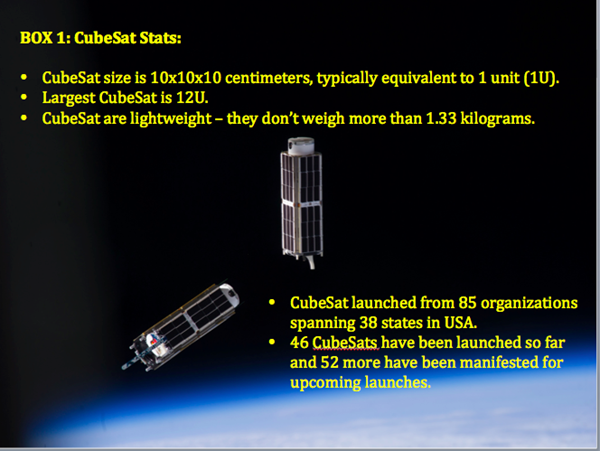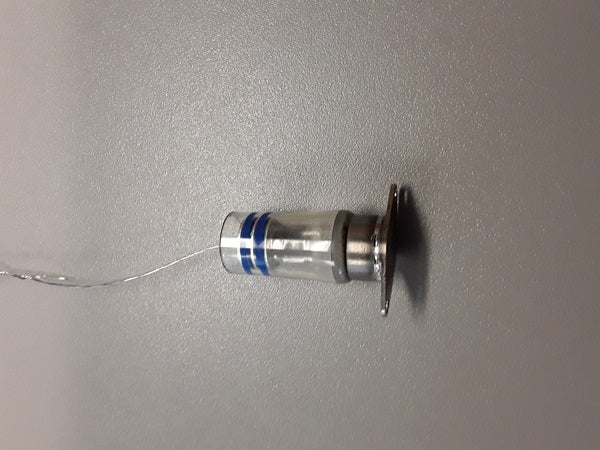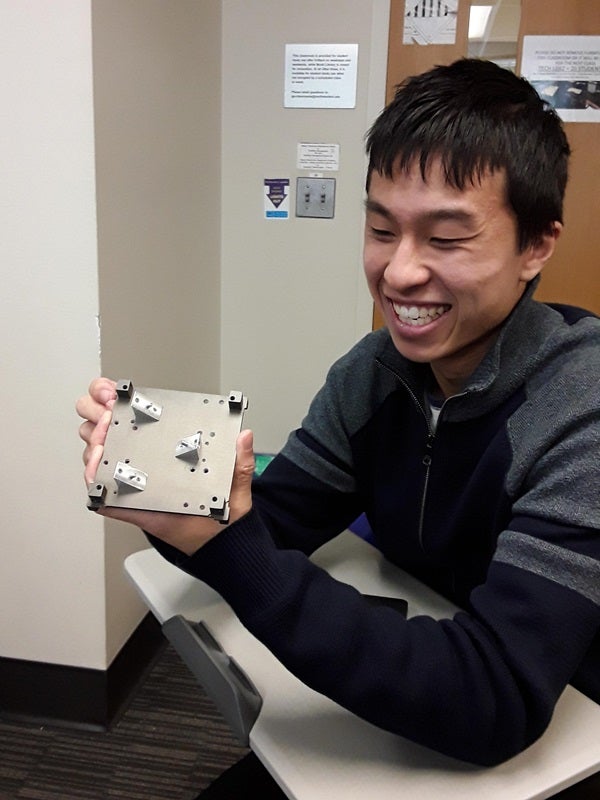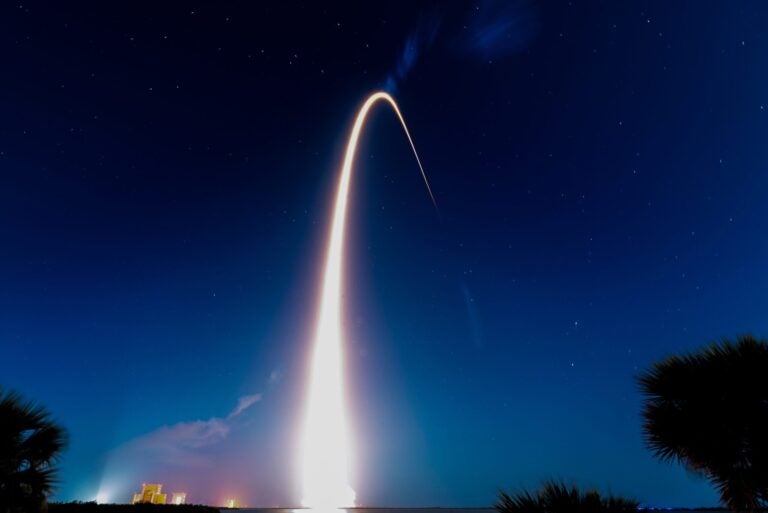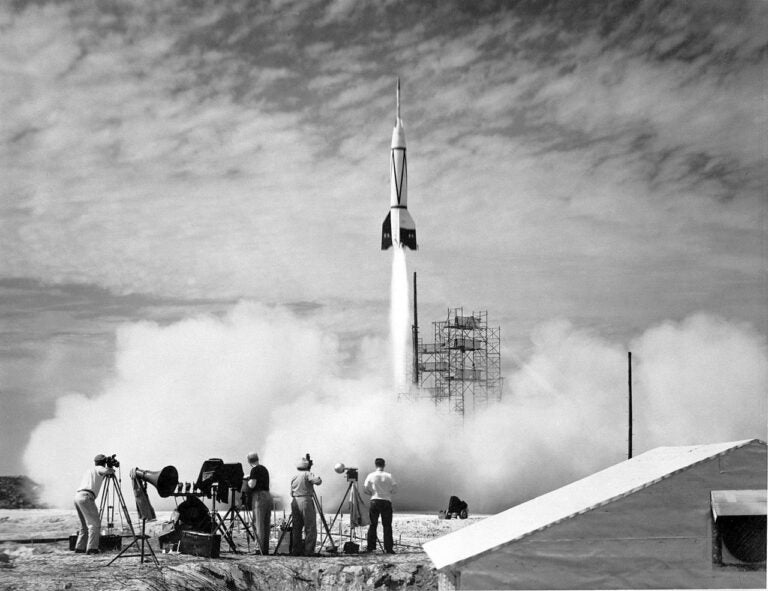CubeSats — a class of nanosatellites no bigger than a bread box (right) — were developed by researchers at the California Polytechnic State University and Stanford University in 1999. This type of satellite was mainly conceptualized as an educational component and a tool for low-Earth orbit space research. In 2006, NASA launched its fully automated CubeSat — the GeneSat-1 — carrying a bacterial payload, designed to follow the effect of space on the growth of the bugs! Having successfully utilized the CubeSat design, NASA has since embraced its versatility as a vehicle for technology demonstration in space and has selected 152 CubeSat missions from a number of research institutions and universities to date.
David Dunand, Professor of Material Sciences and Engineering at Northwestern University, mentors the ambitious SpaceICE endeavor, carried out by a team of undergraduate researchers. The unique feature of the SpaceICE CubeSat is its scientific payload, containing a freeze-casting experiment (below): a simple technique for fabricating materials that is Dunand’s domain of expertise.
SpaceICE’s mission is to test the role of space — with microgravity — in how materials are fabricated by this novel technique. Along with the tantalizing possibility of creating structures from materials available in situ during space travel and beyond, in alien habitats, this mission might also augment our understanding of how gravity shapes the formation of materials on Earth. “Essentially, we use space as a lab to help us better understand what happens on Earth and do things better on Earth,” says Dunand.
SpaceICE is a multi-disciplinary venture — especially because the team needs custom-built equipment for the payload, as opposed to picked-off-the-shelf stuff they use in their Earth-based experiments! The reason for this is that regular materials outgas and degrade in vacuum. “We need to special order Thor lenses which are not plastic, buy materials that are vacuum tested, use Teflon wiring, Pyrex container[s] for our experiment, etc., to name a few,” says Dunand’s student Krysti Scotti, the lead undergraduate on the SpaceICE team, who has put together this entire venture. And after procuring the space-appropriate tools, it still requires getting creative minds together to figure out the best solutions to rejig the freeze-casting experiment for space.
And the SpaceICE team turned to Jon Igartua, a thermal analysis specialist from UIUC, who performed an in-depth analysis using a software package called NX to model the space environment for the satellite. “I have done a lot of thermal analysis and SpaceICE is definitely the most thermal heavy that I have seen,” says Igartua. “Thermal heavy” in this case means “heat intensive” — the CubeSat’s setup will generate more heat than what is normally dissipated by standard methods used in most satellite technology. This is why extra steps were taken for the project: Igartua designed software to visualize the orbit, some 280 miles (450 kilometers) above Earth. The software plots the orbit of the satellite around Earth and calculates how much solar energy the satellite would absorb at different parts of the orbit.
The 50-percent limit
A key part of assembling the CubeSat for SpaceICE pertains to one of the mission’s prominent research goals. How will the team know if their mission succeeded? “For that we will need to look at the data,” says Scotti. SpaceICE’s initial plan is to run one freeze-casting experiment a day for the first 30 days and assess operations to determine if everything is running as per plan. Proof of a smooth, glitch-free mission must come in the form of images and temperature data.
Thermocouples — hair-thin wire devices — will be placed at 10 different positions in the suspension, which will act like thermometers. In order to determine how the suspension solidifies in the mission, SpaceICE will analyze the temperature evolution of the system over the course of solidification, with data generated by thermocouple readings every 160 milliseconds. That is a lot of data!
However, the experimental data is not transmitted live. Instead, right after an experiment, the data is backed up, stored on the CubeSat, and transmitted to the ground station at UIUC during time windows that are dependent on the satellite’s position. This may take 24–48 hours, as there are only two such time windows a day for data transfer. The SpaceICE team gets this data from UIUC a day later. Effectively, it takes the team 72 hours after the experiment in space to determine whether everything worked out as planned.
All that data generation and storage requires battery power, “without which the payload can’t perform the science,” says Kunde. Enter UIUC’s Jeff Perez, who considers various experimental scenarios and CubeSat orientations to estimate the amount of battery drain while in orbit. Perez calculates this by running another piece of software. Using information such as the mission’s orbit and the fact that the solar-paneled CubeSat is almost Sun-synchronous — meaning more access to sunlight — Perez’s simulations predict that SpaceICE can easily re-juice its battery after experiments. He has predicted a safe level for battery power throughout the mission, below which they run the risk of degrading quickly and burning out.
And what is deemed a safe level? “Think of it as your phone battery. If your phone has less than 50 percent battery power technically it’s not good for it, as the life of the battery is decreased,” says Kunde. So to ensure adequate power, SpaceICE’s goal is maintain the battery level close to or above 50 percent throughout the lifetime of the mission, particularly after experiments. All this seems well within achievable limits from Perez’s calculations.
Stop-motion animation of the freeze-casting process.
Alichtner (Wikipedia)
SpaceICE exemplifies how undergraduate students barely in their junior and senior year can perform high-precision science, underscoring one of NASA’s main motivations. “Funding CubeSat missions helps us develop the next-generation scientists and we are better prepared for a space workforce,” says Brenda Dingwall, the NASA mission manager for SpaceICE.
Igartua has an interesting take on why NASA and other agencies love CubeSat missions. “We can launch it for a quarter million dollars and for stuff that is going to deorbit fast and probably destroy itself in the process you don’t want to spend any more,” he says, noting that the CubeSat will stay in orbit for at least six months.
So, after the initial 30-day testing period ensuring everything is shipshape with the CubeSat, Scotti plans to ramp up the experiments to generate a lot more data! “It makes sense to do as many experiments as possible after a month, since the longer the CubeSat is up there, the more risks we have,” says Scotti, who is excited to go to the launch.
As for the scientific demonstration that the mission hopes to accomplish, in the era of 3-D printing, the freeze-casting method might be eking out a niche for itself and is perhaps even poised to become a better method in terms of getting cheaper, non-toxic, and recyclable space-based manufacturing. As Dunand puts it, “We will and must use in situ materials in the land to colonize the Moon, Mars, and beyond. And SpaceICE is really pushing forward techniques we need 20 to 100 years from now.”


